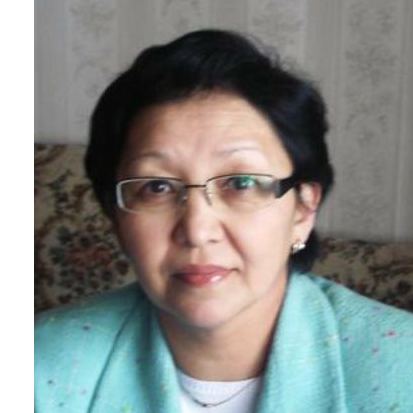METHANOL PRODUCTION UNITS OF MODULAR TYPE FOR INDUSTRY DECARBONIZATION
DOI:
https://doi.org/10.31489/2022No3/45-54Keywords:
decarbonization, methanol production units, chemical reaction modeling, computational fluid dynamics, combustion, partial oxidationAbstract
The production of carbon-containing chemicals is a way to decarbonize gas emissions. In particular,
methanol (CH3OH) can be produced from associated petroleum gas, which is currently flared. It makes sense to
use simple methods of hydrocarbon gas conversion into synthesis gas, such as partial oxidation of methane to
create small modular plants for direct operation in oil and gas fields. The numerical modelling of partial
oxidation is considered, taking into account the kinetics of chemical processes and the design of the equipment.
In this work the several models have been built to describe partial oxidation of natural gas with air - the
equilibrium and complete 3D models which take into account the phenomena of mass and energy transfer, as well
as chemical transformation. The main conclusion of the model comparison is that the full numerical model
predicts incomplete oxidation quite well, while the simpler equilibrium model does not. In the future, the results of
the numerical modelling of oxygen methane conversion will be investigated and presented
References
Zero Routine Flaring by 2030. World Bank Initiative. Available at: thedocs.worldbank.org/en/doc/ -0400072021/zrf-initiative-text-list-map-98 (Dec13, 2021).
New Data Reveals Uptick in Global Gas Flaring. World Bank press release. Available at: www.world bank. org /en/news/press-release/2016/12/12/new-data-reveals-uptick-in-global-gas-flaring (Dec12, 2016).
Huang K., Fu J.S. A global gas flaring black carbon emission rate dataset from 1994 to 2012. Sci Data. 2016. Vol. 3, 160104 [electronic resource].
Vorob’ev A., Shchesnyak E. Associated Petroleum Gas Flaring:The Problem and Possible Solution. Proc. of the “14th International Congress for Applied Mineralogy - ICAM”, 2019, pp 227–230.
Rodin L. Compact Methanol Production at Oil and Gas Fields. Nowadays and development perspective. Proceeding of the “VII International Oil and Gas Conference”. NewFolk O&G CC. Lviv, Ukraine. 2021, pp.72.
Melnikov E.J. ed. Azotchik Handbook. Moscow Chemistry, 1986, 54 p. [in Russian]
Nestle F., et.al. Kinetic modelling of methanol synthesis over commercial catalysts: A critical assessment. Chem. Eng .J. 2020. Vol. 394, pp. 1 – 13.
ANSYS FLUENT 12.0 Theory Guide, Release 12.0 © ANSYS, Inc. 2009-01-23. Available at: www.afs. enea.it/project/neptunius/docs/fluent/html/th/main_pre.htm.
Smith G.P., Golden D.M., Frenklach M., et al. GRIMech 3.0. Available at: http://combustion.berke ley.edu/gri-mech/version30/text30.html.
Magnussen B.F. On the Structure of Turbulence and a Generalized Eddy Dissipation Concept for Chemical Reaction in Turbulent Flow. Proceeding of the “19th AIAA Aerospace Science Meeting”. St.Louis, Missouri, USA. 1981, pp.1 – 6.
Magnussen B.F. Modeling of NOx and soot formation by the Eddy Dissipation Concept. Int.Flame Research Foundation. Proceedings of “11th Task Leaders Meeting, IEA Working Party on Energy Conservation in Combustion”, Őrenäs, Glumslöv, Sweden, 1989. pp. 248 – 268.
Wang Y., Zeng H., Banerjee A., et al. Elementary reaction modeling and experimental characterization on methane partial oxidation within a catalyst-enhanced porous media combustor. Energy & Fuels. 2016. Vol.30 (9), pp. 7778 – 7785. doi:10.1021/acs.energyfuels.6b01624
Voloshchuk Y., Vascellari M., Hasse Ch., et al. Numerical study of natural gas reforming by non-catalytic partial oxidation based on the Virtuhcon Benchmark. Chemical Engineering Journal. 2017. Vol.327, pp. 307 – 319. doi:10.1016/j.cej.2017.06.061.
Yunus A. Çengel, Afshin J. Ghajar. Heat and Mass Transfer: Fundamentals & Applications. 5th edition. McGraw-Hill Education. 2015, 992 p.
The Future of Petrochemicals Towards more sustainable plastics and fertilisers. OECD/IEA, 2018. Available at: www.iea.org
Lu X., Wang T. Simulation of ash deposition behavior in an entrained flow coal gasifier. International Journal of Clean Coal and Energy. 2015. Vol.4, pp. 43 – 59.















